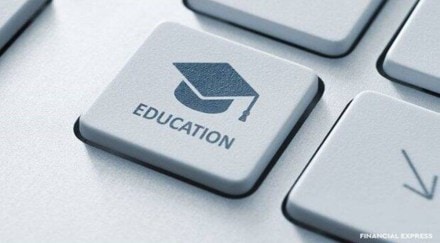Founded by Maninder Singh Bajwa, iScuela is working with the government of Punjab and Rotary India Literacy Mission (RILM) to digitise and digitalise all 19,272 government schools in the state. In the process, students will have access to interactive multimedia content at schools and home, and teachers will have the same on their smart devices. Bajwa shares with FE’s Vikram Chaudhary how iScuela (and its partnerships) can make a difference in the lives of some relatively underprivileged students. Excerpts:
There are thousands of edtech platforms in India, how does iScuela differentiate itself?
iScuela can operate with any tech solution, old or new, so schools don’t have to invest in new technology, making it the go-to solution for public and low-cost private schools with outdated hardware. Over the years, we’ve had a fairly high acceptance rate for teachers (currently 86%). This high level of acceptance leads us to assume that rather than perceiving edtech platforms as a threat, teachers are utilising these to teach better. Also, iScuela is working from the bottom of the economic pyramid by providing solutions to students in public schools. Most edtech platforms start by offering their services to consumers from the upper end of the economic pyramid, and then percolating downwards.
While the pandemic led to a spurt in online learning, it also made us realise how big the digital divide is between the rich and the poor, and urban areas and rural areas. How can companies like iScuela help reduce that digital divide?
At iScuela, we have taken a number of initiatives to bridge or close the digital gap, such as making material available offline to lessen dependency on the internet. We also design our software and content with low-end classroom hardware in mind, as well as low-cost smartphone devices. Finally, we focus heavily on vernacular languages in order to enable students in rural and semi-urban regions to grasp the subject matter. During the pandemic, we produced multimedia-rich TV episodes for all children who did not have access to smart gadgets at home but could consume content through TV sets.
How many students, teachers and schools have you worked with?
So far, our platform has been used by over 2.4 million students, 200,000-plus instructors, and over 12,000 schools across Punjab and Haryana. We’ve witnessed a significant spike in the usability stats of students utilising our mobile platforms since the pandemic hit. We anticipate that once schools fully reopen, the in-classroom teaching tools we’ve supplied will augment at-home learning, resulting in a real blended learning paradigm.
Do you also work with governments, school boards and NGOs?
Our first project was with the Punjab government, where we collaborated with subject matter experts to provide multimedia-rich content in Punjabi and English that was aligned with local curriculum. This content was subsequently delivered across the state in the form of a mobile app for at-home study as well as an in-classroom teaching platform. We developed the Avsar app for the Haryana government in partnership with WeExcel, which was first intended to be a Covid-19 response effort but has now evolved into an important platform for the government. More than 1.1 million assessments have been completed on the Avsar app, with over 1.8 million report cards prepared and sent digitally to students across the state.We collaborated with RILM, NCERT and the Ministry of Education to provide multimedia curriculum for grades 1-12 during the pandemic to bridge the digital gap. This content has been broadcast on the E-Vidya channels of the central government. As a result, all youngsters who do not have access to the internet or cell phones may now consume content via TV sets.
Do you also create content? If yes, which student segment does it serve?
All of our material is created in-house. We employ the most up-to-date multimedia to provide engaging content for students in grades K-12.
